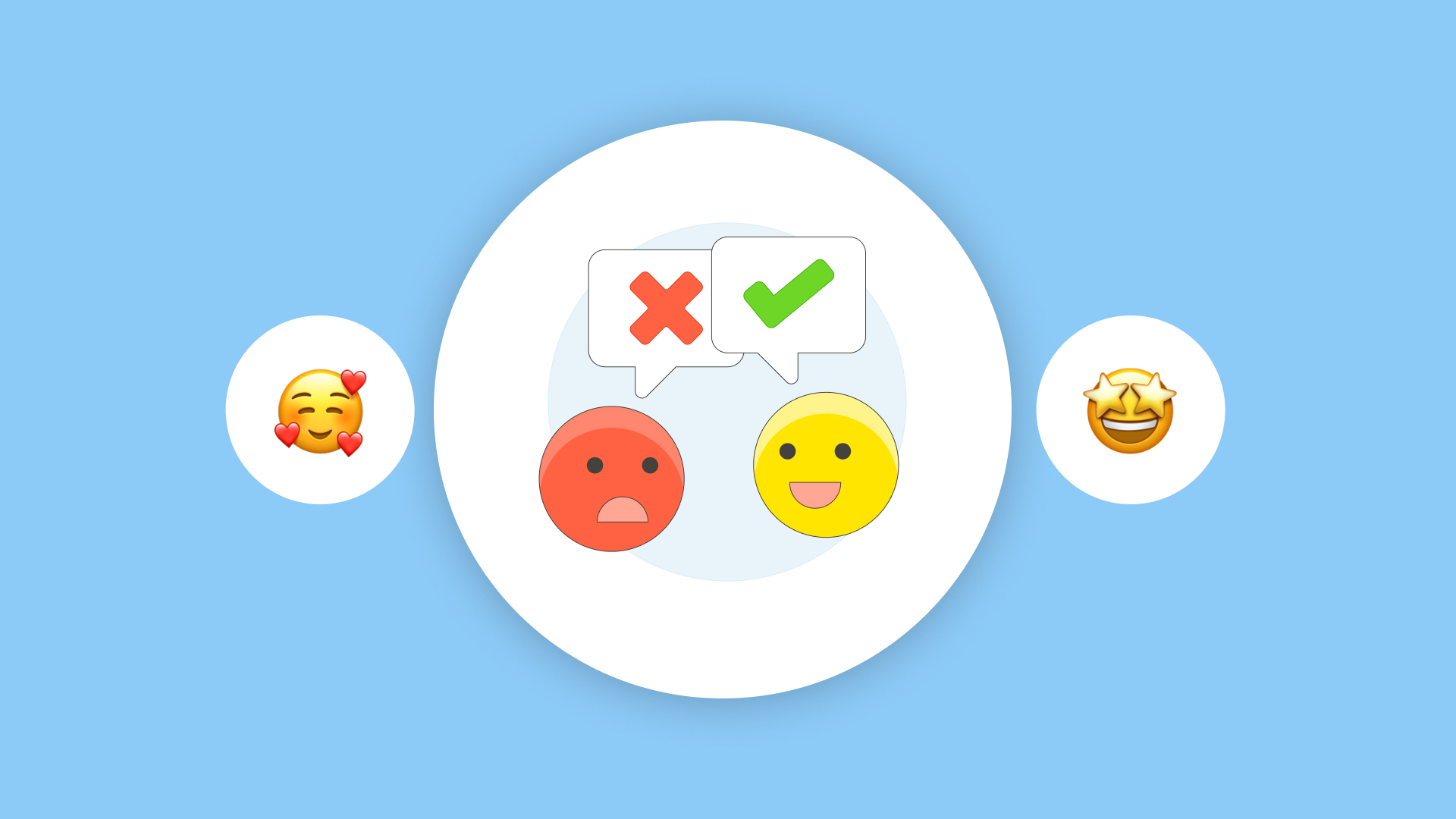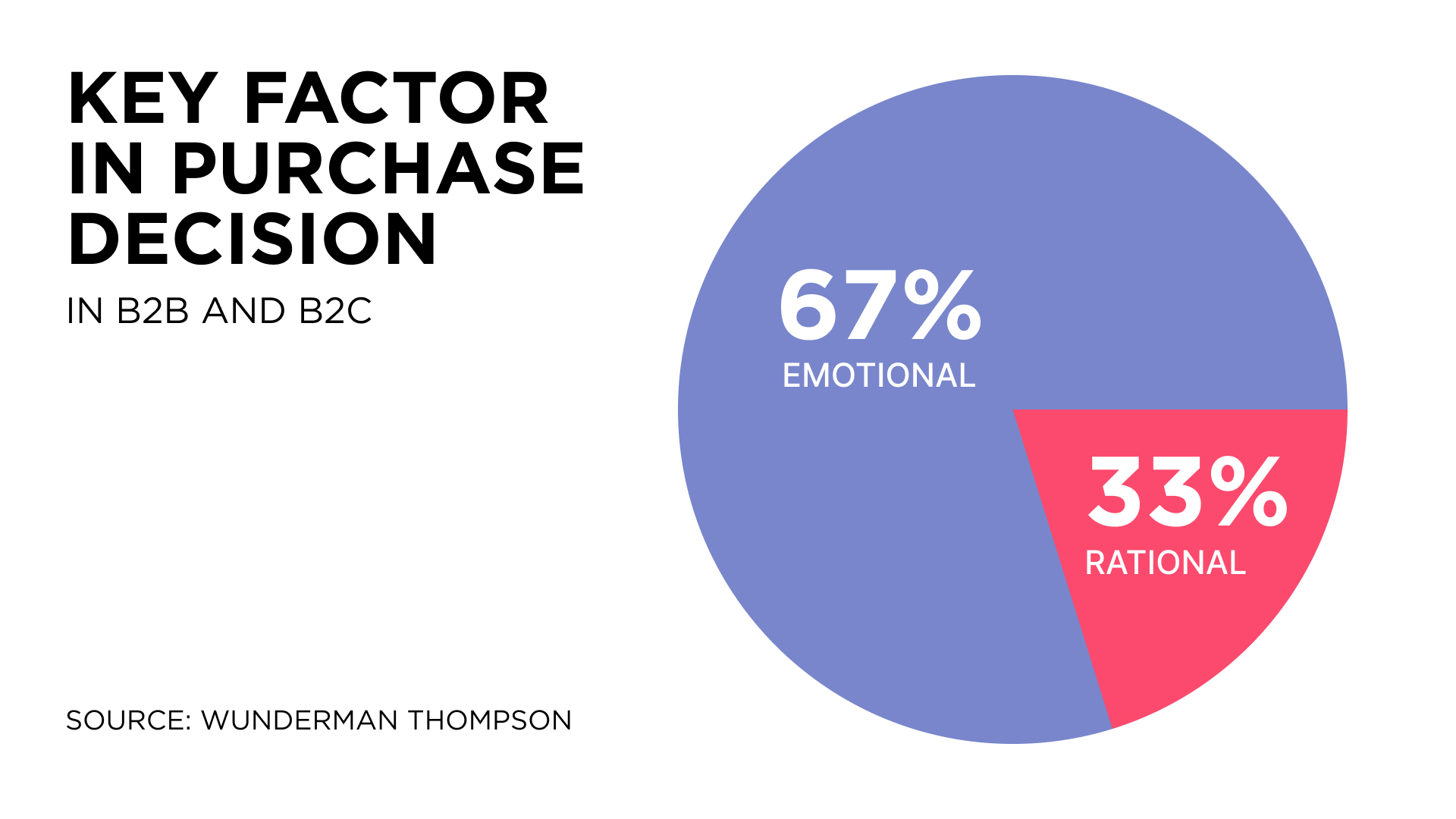Emotional marketing and how to employ it properly
Learn how to connect with clients through emotions.

Why is emotional marketing so powerful? It is a known fact that people, more often than not, are influenced by emotions rather than logic. This aspect of our nature plays an important role in marketing because emotional connection has the power to bring genuine devotion to customer-brand relationships.
Studies show that emotionally connected customers are 3 times more likely to recommend a particular brand to friends and family, while companies with strong emotional connections to their customers have outperformed the market by 80% over the past 5 years. In the article, we are going to explore what constitutes emotional marketing, how it works, and what strategies can be implemented by virtually any company — all of this supplemented by examples of emotional advertising cases by renowned brands.
What is emotional marketing?
Emotional marketing is a set of advertising approaches aimed at evoking specific feelings in potential customers, which helps them to identify and connect with a brand.This can be a feeling of freedom, a sense of belonging, or good old nostalgia. Emotions add depth and significance to interactions between brands and clients, resulting in sustained engagement and a company becoming an integral part of a customer's life. Effective emotional marketing demonstrates that the depth of connection established through it surpasses that in other marketing forms, fostering long-term customer loyalty, more frequent sales, or higher average check size.

The process of implementing an emotional marketing strategy can be divided into three main stages.
- Exploring the emotional landscape. This includes both data analysis and psychological study that helps to discern emotional triggers that drive a brand’s audience.
- Establishing target emotions. This phase determines the palette of emotional responses that a brand needs to evoke to increase bonding and trust in its audience.
- Striking the correct emotional chords. Finally, the brand works towards incorporating desirable emotions into its essence, from how products are presented to how client support communicates.
Benefits of emotions in marketing
By engaging with customers on an emotional level, companies can get numerous advantages.

Improved first impression
When a customer meets a new brand their initial impression gets formed in just a couple of seconds. If this short period of utmost importance is influenced by a correct marketing emotion, a brand can expect to stick in a customer’s memory, probably associated with something relevant and familiar to them.
Amplified fear of missing out
The Fear Of Missing Out (or FOMO) is a deeply ingrained human sentiment, rooted in our history as social beings who have thrived in communal settings for countless generations. Emotional marketing capitalizes on this primal sentiment, which has been amplified in the instantaneous interactions of social media, to persuade its audience to make swift buying choices.
FOMO creates a sense of immediacy among the audience it aims at, making them think and perceive that they cannot miss out on what “others” have already bought or encountered, due to the dread of social exclusion. Together with real-time marketing, which is made possible by social media, FOMO can work wonders for establishing a stronger connection with customers.
Standing out among competitors
Emotionally-driven marketing aids business in setting it apart from the rivals and establishing a distinctive brand image. Furthermore, it can alter purchasing behavior by tapping into emotions that influence decision-making. A successful campaign requires a well-rounded comprehension of the target demographic and their emotional stimuli, as well as originality in delivering the brand’s message.
Stronger brand loyalty
The potency of emotional marketing lies in its capacity to appeal directly to the heart rather than cold reason. It revolves around narratives that touch our biggest wishes, fears, and aspirations. Emotions like compassion or shared values, if sparked by the narrative of emotional marketing, can establish profound bonds with customers. Not only does this increase sales throughout a particular campaign, but also helps a brand to find a place in the hearts of their clients.
Tips on effective emotions advertising
If you decide to engage the emotions of your audience, there are a few things to remember in order to reap as many benefits as possible without any negative implications.
Pay attention to customers' feelings. Through data analysis, you can determine which emotions play a more important role in your target audience and adjust your marketing message accordingly. For instance, whilst some clients prefer the feeling of exclusivity and luxury, others might place a higher value on freedom or family values. Adjust your marketing campaigns and narratives accordingly.
Find optimal channels for regular connection. There are various ways to employee marketing that touches emotions, but one thing remains true to all of them — connect with the audience via the channels they use. Considering the current popularity of social media and messengers, it might be wise to use these platforms to launch your emotional marketing campaign and be open to two-way communication with the audience.
Focus on existing clients. While drawing in new audiences is valuable, nurturing loyalty among your current clients is a powerful foundation for emotionally driven marketing. Providing distinct experiences, fostering a sense of community, and delivering exceptional customer service are prime examples. When you invest in your customers, it cultivates a dedicated following that not only drives sales but also fuels the expansion of your customer base via recommendations and referrals.
Examples of emotional marketing
Some of the most iconic brands in various industries have had success on the path of emotional marketing already, from which we all can learn something.
‘Share a Coke’ by Coca-Cola’s
Coca-Cola’s campaign showcases a remarkable instance of marketing that touches our emotions. By personalizing their products with consumers’ names on bottles, Coca-Cola fostered a deep sense of connection between the brand and its customers. This simple yet inventive strategy effectively elicited positive emotions, amplifying consumers’ inclination to purchase the product.
'What Most Schools Don't Teach' by Code.org
Launched in 2015, Code.org's campaign has rocketed past 100 million views on YouTube, inspiring countless young minds to embrace the magic of code. Packed with humor, heart, and real-life stories from tech titans like Bill Gates and Mark Zuckerberg and media personas, these videos unlock the hidden potential of coding. By weaving together impactful facts, engaging stories, and a clear call to action, Code.org 's campaign has successfully cemented the platform’s reputation as the key online destination for those who aspire to learn coding.

Anti-Plastic Straw Movement
The movement against plastic straws serves as a powerful illustration of how emotional marketing can drive change. Initially, the movement faced challenges in gaining traction solely through factual information about the Great Pacific garbage patch. However, the release of a heart-breaking video featuring a turtle suffering with a straw lodged in its nose sparked widespread outrage, compelling immediate action. This demonstrates how harnessing strong emotions, such as anger, has the potential to incite meaningful action.
Conclusion
Crafting enduring and emotional relationships with your audience goes beyond surface-level interactions. It requires a deep understanding of their motivations and desires, serving as the cornerstone for forging messages that resonate profoundly, evoking emotions and driving meaningful engagement. Merely satisfying customers isn't sufficient to transform them into loyal brand advocates and requires more than competitive pricing and discounts. Through a comprehensive analysis of the audience, one can uncover the themes essential for building an emotional connection with the customer base.
Since effective customer communication is key for any marketing strategy, next, check our guide on how to improve customer communication and learn about ways to boost sales while conversing with your audience.
You might be interested in similar topics
What is Conversational Marketing (Its Strategy, Benefits, and Examples)?
Real-Time Marketing: How to Use it Effectively
How to Build a Personal Brand in Tech: 6 Steps

Subscribe to Umnico news!
Be the first to get recommendations and up-to-date information
